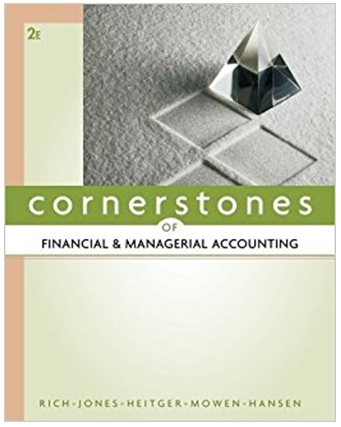Multiple Choice Questions 1. The main purpose of adjusting entries is to: A) Record external transactions and
Question:
1. The main purpose of adjusting entries is to:
A) Record external transactions and events.
B) Record internal transactions and events.
C) Recognize assets purchased during the period.
D) Recognize debts paid during the period.
E) Correct errors.
2. The broad principle that requires expenses to be reported in the same period as the revenues that were earned as a result of the expenses is the:
A) Revenue Recognition principle.
B) Cost principle.
C) Cash basis of accounting.
D) Matching principle.
E) Time period principle.
3. The system of preparing financial statements based on recognizing revenues when the cash is received and reporting expenses when the cash is paid is called:
A) Accrual basis accounting.
B) Operating cycle accounting.
C) Cash basis accounting.
D) Revenue recognition accounting.
E) Current basis accounting.
4. The approach to preparing financial statements based on recognizing revenues when they are earned and matching expenses to those revenues is:
A) Cash basis accounting.
B) The matching principle.
C) The time period principle.
D) Accrual basis accounting.
E) Revenue basis accounting.
5. Prepaid expenses, depreciation, accrued expenses, unearned revenues, and accrued revenues are all examples of:
A) Items that require contra accounts.
B) Items that require adjusting entries.
C) Asset and equity.
D) Asset accounts.
E) Income statement accounts.
6. Profit margin is defined as:
A) Revenues divided by net sales.
B) Net sales divided by assets.
C) Net income divided by net sales.
D) Net income divided by assets.
E) Net sales divided by assets.
7. When closing entries are made:
A) All ledger accounts are closed to start the new accounting period.
B) All temporary accounts are closed but not the permanent accounts.
C) All real accounts are closed but not the nominal accounts.
D) All permanent accounts are closed but not the nominal accounts.
E) All balance sheet accounts are closed.
8. Journal entries recorded at the end of each accounting period to prepare the revenue, expense, and withdrawals accounts for the upcoming period and to update the owner's capital account for the events of the period just finished are referred to as:
A) Adjusting entries.
B) Closing entries.
C) Final entries.
D) Work sheet entries.
E) Updating entries.
9. The recurring steps performed each accounting period, starting with analyzing and recording transactions in the journal and continuing through the post-closing trial balance, is referred to as the:
A) Accounting period.
B) Operating cycle.
C) Accounting cycle.
D) Closing cycle.
E) Natural business year.
10. A classified balance sheet:
A) Measures a company's ability to pay its bills on time.
B) Organizes assets and liabilities into important subgroups.
C) Presents revenues, expenses, and net income.
D) Reports operating, investing, and financing activities.
E) Reports the effect of profit and withdrawals on owner's capital.
Financial Statements
Financial statements are the standardized formats to present the financial information related to a business or an organization for its users. Financial statements contain the historical information as well as current period’s financial... Balance Sheet
Balance sheet is a statement of the financial position of a business that list all the assets, liabilities, and owner’s equity and shareholder’s equity at a particular point of time. A balance sheet is also called as a “statement of financial...
Fantastic news! We've Found the answer you've been seeking!
Step by Step Answer:
Related Book For 

Cornerstones of Financial and Managerial Accounting
ISBN: 978-1111879044
2nd edition
Authors: Rich, Jeff Jones, Dan Heitger, Maryanne Mowen, Don Hansen
Question Posted:





